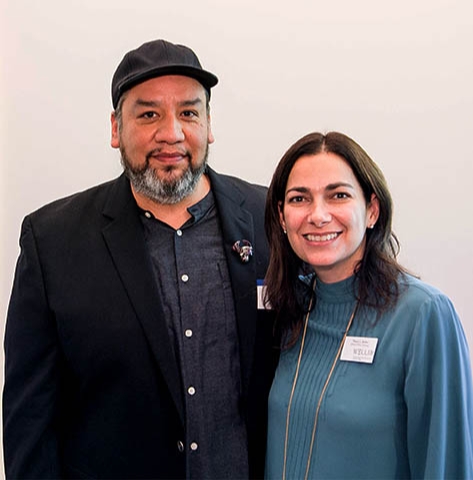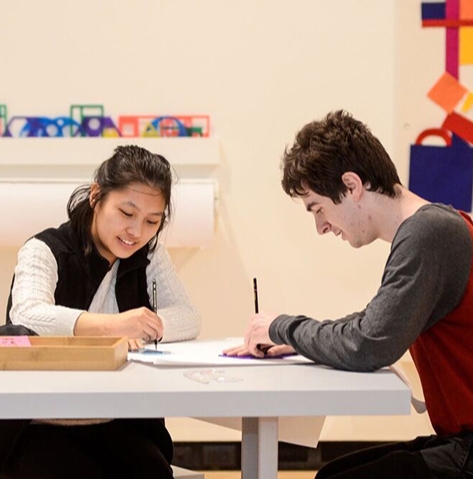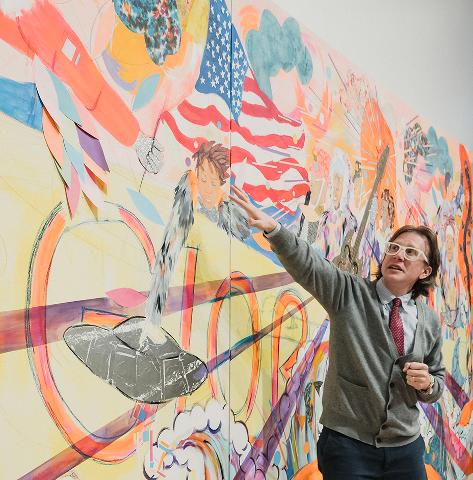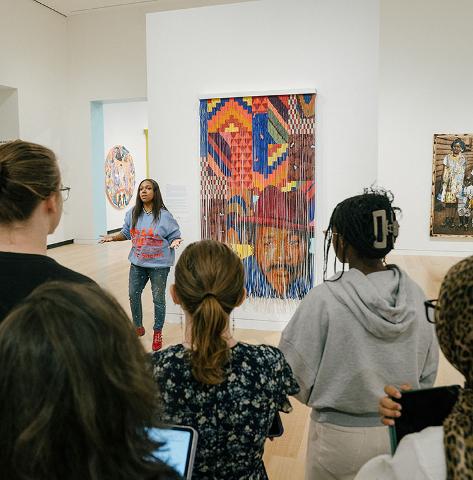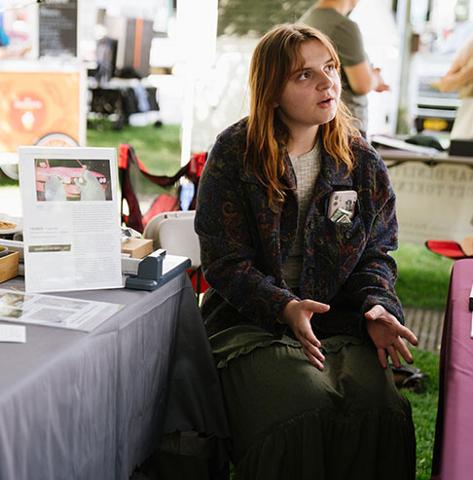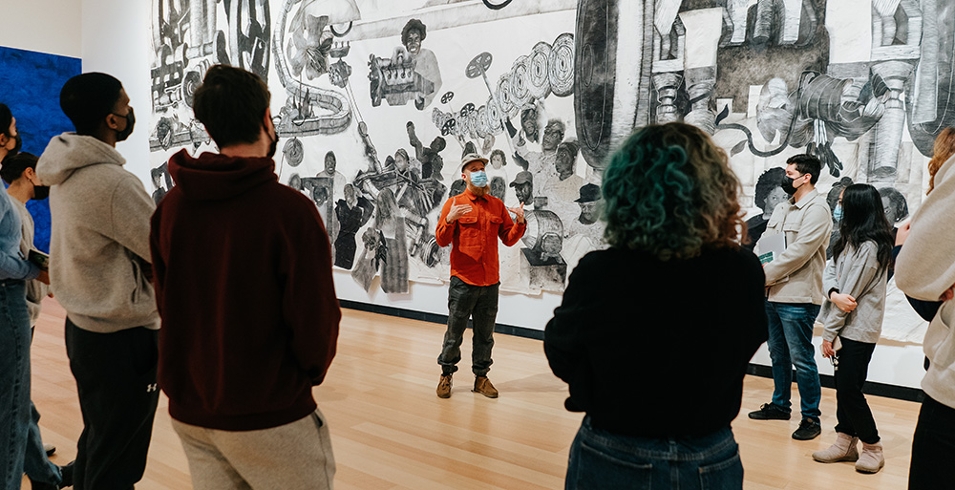
It has been quite rewarding to work with Hamilton’s student body over the past two-plus years of my career at the Wellin. They are engaged, inquisitive, and motivated. I’ve had dozens of conversations with classes in our exhibitions and have always appreciated the questions that students have asked of me or of the visual art we display. And one question that has arisen multiple times across several of these conversations is, simply put, “What can art do?” It’s a question I understand being asked and not one that I feel is raised in any flippant way. The running joke on campus is of course that Hamilton students will one day run the world, so it’s no wonder they have questions about art’s efficacy. Especially given that the vast majority of classes we tour at the Museum are not ostensibly focused on visual art.
It is also a question that exhibiting artist Yashua Klos has faced quite often in his career, which is why I was so thankful that he incorporated his ideas about this topic in all of his lectures and class discussions on campus this spring. I heard the artist state over and over again to our various students that “great art asks great questions.” While the question of what art can do certainly has many different answers, this has been one of my favorites. Over the course of more than 30 class tours, I was witness to exactly what Klos posited, as his work became the catalyst for thought-provoking conversations that connected theories from the classroom to real world events and the people involved in them. Through my position at the Wellin I have pretty direct access to the faculty, so I decided to ask them if my observations were sound, if Yashua’s work had proved valuable in facilitating dialogue and moreover succeeded in providing a link to the lived experience of contemporary citizens.
Some of the responses I received included a comment from sociology professor Alex Manning, who brought two different courses, both focused on issues of race, to the exhibition for tours and conversations with the artist. In speaking to the power and utility of these engagements, Manning elaborated,
“Yashua’s exhibition offered a model of how one person can take a critical and sociological look at one’s life in relation to broader forces of economy, history, and racial segregation.”
Still other, very different sociology courses such as “Urban America,” taught by Professor Yagmur Karakaya, visited the exhibition as part of their investigations into the complexity of lived experiences amidst various social forces. Professor Karakaya was grateful that, in her words,
“the artist’s practice centers people as manifold and heterogeneous. Focusing on his family was the perfect way to reflect on multiple issues we tackled in class vis-à-vis urban America including race, labor, industrialization, and de-industrialization.”
In speaking more directly to the relationship between the exhibition and issues of labor and industrialization, Professor Stina Soderling was pleased to have brought her Women’s and Gender Studies class “Labor, Gender, and the Environment” to view OUR LABOUR. She noticed that the discussions during and after class visits to the Wellin shifted the focus from her own lecturing to a more active, peer-to-peer learning environment, and that ultimately
“art turned out to be the perfect way to address the main learning goal of the course—engaging with issues that lack easy answers.”
This is surely music to the artist’s ears. For me it is a buoy that keeps me not just afloat but also makes me confident that we are using our exhibitions to some of their best means possible. The value and impact of viewing and discussing art surfaces in myriad ways across many different people’s lives and careers. It’s not always easy to see. I’ll be thankful for the words of my colleagues at Hamilton, some of which I have shared here, to remind me of art’s impact and the Wellin’s important place on campus.


